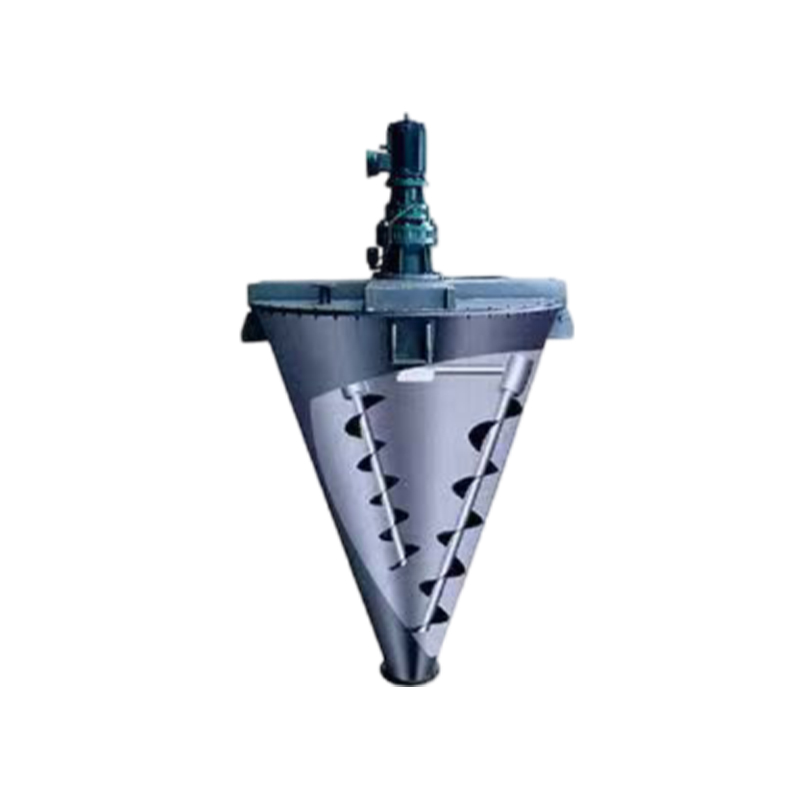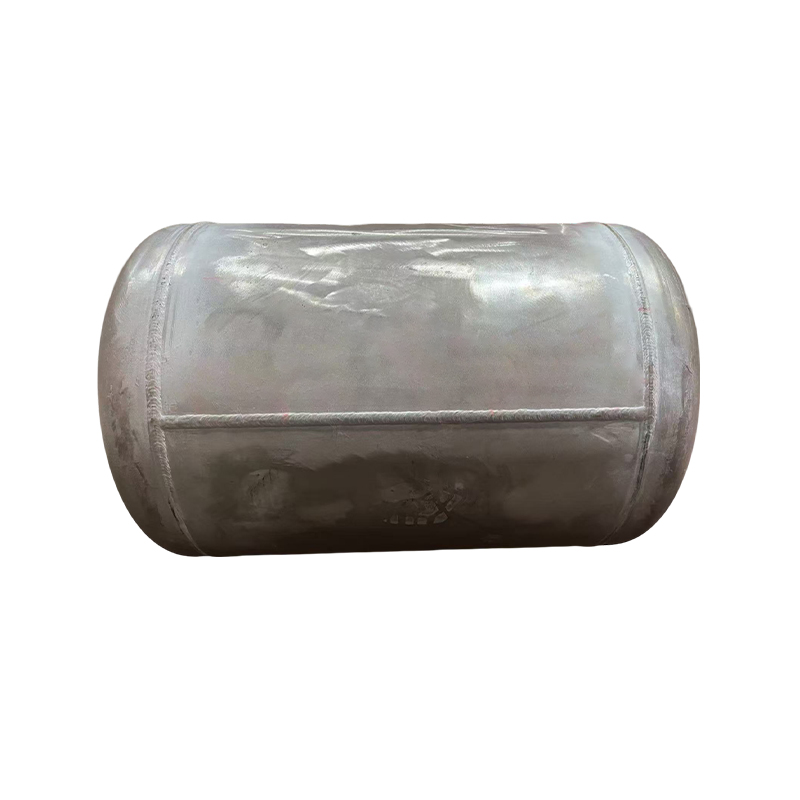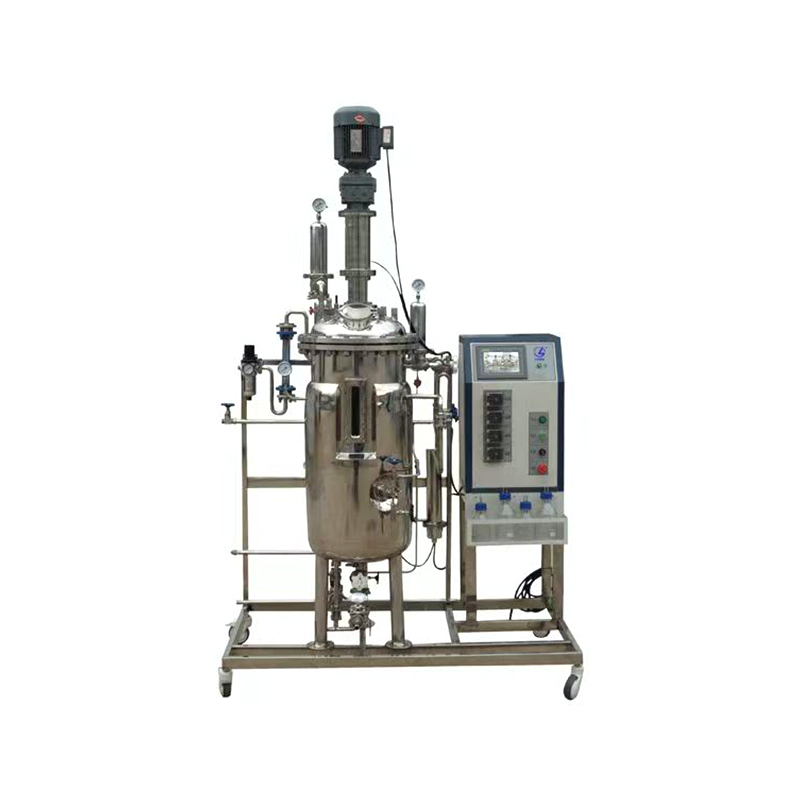How do mixing tanks achieve coordinated control of temperature, pressure, and stirring rate in chemical reactions?
Release Time : 2025-11-13
In modern chemical production, mixing tanks are not only containers for mixing materials but also frequently participate as key reaction units in processes such as chemical reactions, dissolution, emulsification, or crystallization. Their operational effectiveness directly impacts product quality, reaction efficiency, and process safety. Especially in exothermic reactions, gas-liquid reactions, or multiphase systems, temperature, pressure, and stirring rate are highly coupled, requiring precise coordinated control to ensure stable, efficient, and safe processes.
1. Temperature Control: The Core of Reaction Thermal Management
Chemical reactions often involve significant thermal effects—exothermic reactions, if heat cannot be removed promptly, can lead to localized overheating, increased side reactions, or even runaway reactions; endothermic reactions require continuous heating to maintain the reaction rate. Mixing tanks are typically equipped with jacketed or internal coil systems, using circulating heat transfer oil, steam, or cooling water for heating or cooling. Advanced control systems automatically adjust the flow rate and temperature of the heat transfer medium based on preset process curves or real-time temperature feedback. For example, in polymerization reactions, the system can dynamically adjust the cooling intensity according to the heating rate to prevent "rapid polymerization." Meanwhile, the stirring rate also affects heat transfer efficiency—increasing the rotation speed enhances convection within the tank, improving heat exchange uniformity; therefore, temperature control is often linked to stirring.
2. Pressure Control: Ensuring Safety and Reaction Balance
Many chemical processes involve volatile solvents, gaseous components, or the generation of gaseous byproducts, causing pressure variations within the tank. Mixing tanks typically integrate pressure transmitters and safety relief devices, maintaining the set pressure through automatic adjustment of exhaust valves, nitrogen pressure valves, or vacuum pumps. For example, in hydrogenation reactions, a constant hydrogen partial pressure must be maintained to ensure the reaction rate; while in vacuum distillation-assisted mixing, precise control of the negative pressure level is necessary. It is worth noting that the stirring rate affects the gas-liquid interface renewal rate, thus affecting gas absorption efficiency and pressure fluctuations within the tank. Therefore, pressure control systems are often linked in a closed loop with the stirring motor and gas feed valve to achieve dynamic balance.
3. Stirring Rate: Affecting Mass Transfer, Heat Transfer, and Reaction Kinetics
Stirring not only promotes uniform mixing of materials but also directly affects the mass transfer coefficient, bubble dispersion, and solid suspension state. In multiphase reactions, insufficient stirring rate leads to a reduced reaction interface and a decreased reaction rate; while excessive stirring can cause shear degradation, excessive foaming, or energy waste. Modern mixing tanks generally use variable frequency motors, which can automatically adjust the speed according to the process stage. More importantly, the stirring rate is not an isolated parameter—it forms a "process triangle" with temperature and pressure. For example, in high-temperature and high-pressure esterification reactions, low-speed stirring is required initially to avoid bumping, the speed is increased in the middle stage to enhance mass transfer, and the speed is reduced in the later stage to reduce by-product formation. This multi-stage strategy relies on programmed collaborative control by PLC or DCS systems.
4. Integrated Automation Systems for Intelligent Collaboration
Mixing tanks are generally connected to industrial automation platforms, integrating multi-dimensional data such as temperature, pressure, stirring, liquid level, and pH through a central control system. The system can automatically execute the entire process of "heating—feeding—isothermal reaction—cooling and discharging" based on a preset formula, and trigger interlock protection in case of abnormalities. Some advanced equipment also introduces model predictive control algorithms, which optimize the combination of three parameters in real time based on the reaction kinetic model, achieving a dual improvement in energy efficiency and quality.
In summary, during chemical reactions, the mixing tank achieves highly efficient coordination of temperature, pressure, and stirring rate through the deep integration of hardware configuration and software control. This multi-parameter linkage not only ensures the safety and controllability of the reaction but also improves product consistency and resource utilization efficiency, reflecting the trend of modern chemical equipment towards intelligence and precision.
1. Temperature Control: The Core of Reaction Thermal Management
Chemical reactions often involve significant thermal effects—exothermic reactions, if heat cannot be removed promptly, can lead to localized overheating, increased side reactions, or even runaway reactions; endothermic reactions require continuous heating to maintain the reaction rate. Mixing tanks are typically equipped with jacketed or internal coil systems, using circulating heat transfer oil, steam, or cooling water for heating or cooling. Advanced control systems automatically adjust the flow rate and temperature of the heat transfer medium based on preset process curves or real-time temperature feedback. For example, in polymerization reactions, the system can dynamically adjust the cooling intensity according to the heating rate to prevent "rapid polymerization." Meanwhile, the stirring rate also affects heat transfer efficiency—increasing the rotation speed enhances convection within the tank, improving heat exchange uniformity; therefore, temperature control is often linked to stirring.
2. Pressure Control: Ensuring Safety and Reaction Balance
Many chemical processes involve volatile solvents, gaseous components, or the generation of gaseous byproducts, causing pressure variations within the tank. Mixing tanks typically integrate pressure transmitters and safety relief devices, maintaining the set pressure through automatic adjustment of exhaust valves, nitrogen pressure valves, or vacuum pumps. For example, in hydrogenation reactions, a constant hydrogen partial pressure must be maintained to ensure the reaction rate; while in vacuum distillation-assisted mixing, precise control of the negative pressure level is necessary. It is worth noting that the stirring rate affects the gas-liquid interface renewal rate, thus affecting gas absorption efficiency and pressure fluctuations within the tank. Therefore, pressure control systems are often linked in a closed loop with the stirring motor and gas feed valve to achieve dynamic balance.
3. Stirring Rate: Affecting Mass Transfer, Heat Transfer, and Reaction Kinetics
Stirring not only promotes uniform mixing of materials but also directly affects the mass transfer coefficient, bubble dispersion, and solid suspension state. In multiphase reactions, insufficient stirring rate leads to a reduced reaction interface and a decreased reaction rate; while excessive stirring can cause shear degradation, excessive foaming, or energy waste. Modern mixing tanks generally use variable frequency motors, which can automatically adjust the speed according to the process stage. More importantly, the stirring rate is not an isolated parameter—it forms a "process triangle" with temperature and pressure. For example, in high-temperature and high-pressure esterification reactions, low-speed stirring is required initially to avoid bumping, the speed is increased in the middle stage to enhance mass transfer, and the speed is reduced in the later stage to reduce by-product formation. This multi-stage strategy relies on programmed collaborative control by PLC or DCS systems.
4. Integrated Automation Systems for Intelligent Collaboration
Mixing tanks are generally connected to industrial automation platforms, integrating multi-dimensional data such as temperature, pressure, stirring, liquid level, and pH through a central control system. The system can automatically execute the entire process of "heating—feeding—isothermal reaction—cooling and discharging" based on a preset formula, and trigger interlock protection in case of abnormalities. Some advanced equipment also introduces model predictive control algorithms, which optimize the combination of three parameters in real time based on the reaction kinetic model, achieving a dual improvement in energy efficiency and quality.
In summary, during chemical reactions, the mixing tank achieves highly efficient coordination of temperature, pressure, and stirring rate through the deep integration of hardware configuration and software control. This multi-parameter linkage not only ensures the safety and controllability of the reaction but also improves product consistency and resource utilization efficiency, reflecting the trend of modern chemical equipment towards intelligence and precision.







